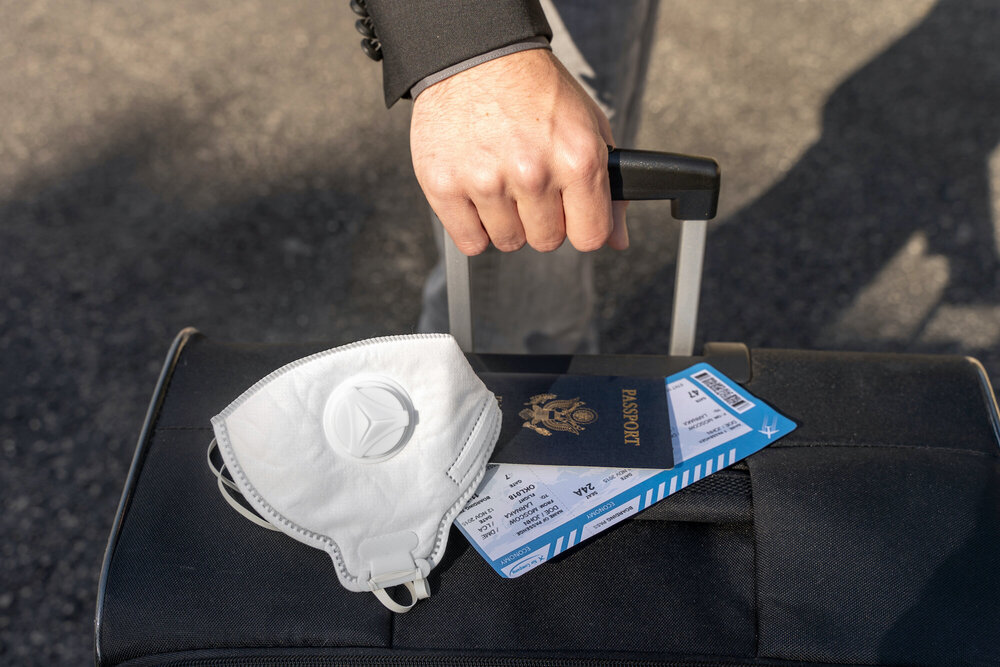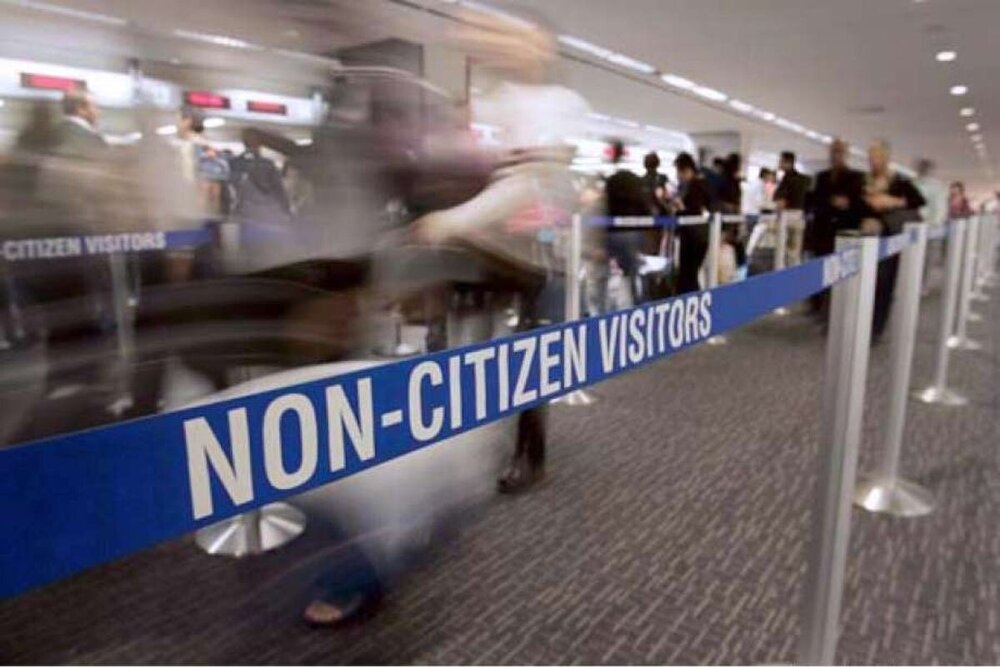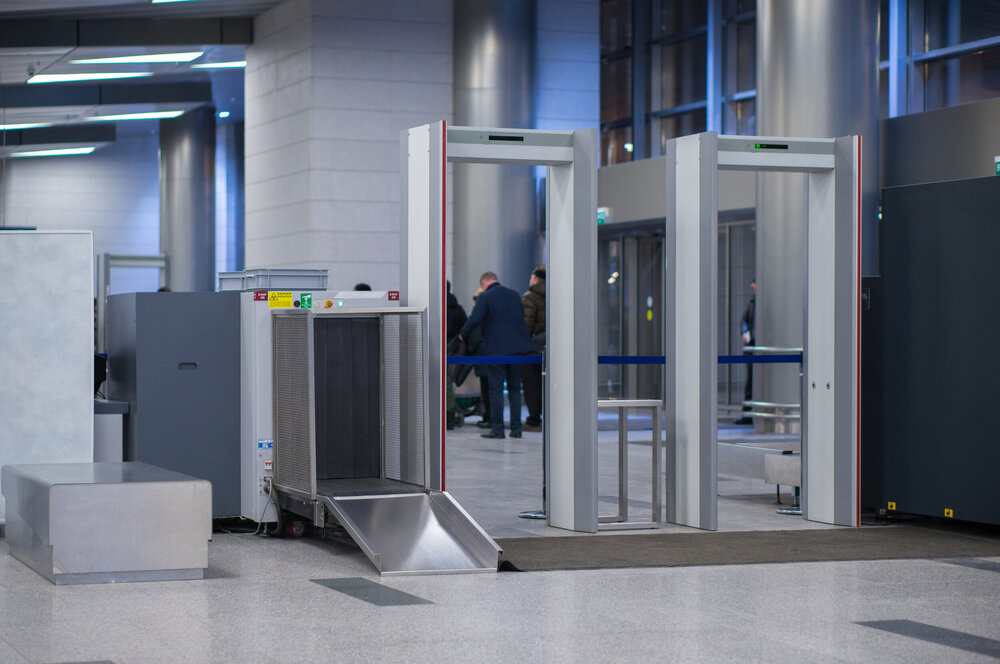In light of the global coronavirus pandemic, the US president issued a proclamation last night to impose a 30-day travel ban on foreign nationals who have visited the 26 European countries of the Schengen Area over the past 14-day period.
The travel ban takes effect at 11:59pm Eastern Time on Friday, March 13, 2020. It excludes US citizens, legal permanent residents, and immediate family members of US citizens; everyone else will not be able to enter the US if they’ve been in one of the 26 Schengen Area countries over the past 14 days.
The affected countries are as follows: Austria, Belgium, Czech Republic, Denmark, Estonia, Finland, France, Germany, Greece, Hungary, Iceland, Italy, Latvia, Liechtenstein, Lithuania, Luxembourg, Malta, Netherlands, Norway, Poland, Portugal, Slovakia, Slovenia, Spain, Sweden, and Switzerland.
(Notably, the United Kingdom and the Republic of Ireland are excluded, as are non-Schengen states such as Croatia, Turkey, or Russia.)
I’ve written earlier this week on my thoughts on travelling in the time of COVID-19, although given this latest development, among all of the other news we’ve seen over the past 24 hours alone, my stance continues to shift day by day.

The Futility of Travel Restrictions
I’ll share some of my thoughts in this article on the impact of the pandemic on global travel and on Miles & Points (the latter of which is a triviality in the grand scheme of things, to be sure).
But first, I must say that I’m astonished and frankly dumbfounded by the lack of clarity and foresight, and ultimately the sheer futility, from last night’s US presidential proclamation.
Even if we were to chalk off the confusing mixed messages between the proclamation itself and the subsequent clarifications from the White House – whether the ban would apply to cargo or not, whether it applied to “all travel from Europe” or only the 26 countries of the Schengen Area, etc. – as merely the status quo of the last four years, the hope that a European travel ban will contain the spread of COVID-19 in the United States is a pipe dream at best.
With well-documented evidence of community spread taking place in all corners of the United States, now is the time for mitigation measures, such as widespread social distancing, rather than a heavy-handed containment measure like a 30-day travel ban on Europe. The pandemic cannot be contained now, but rather, it’s time to slow down its spread so that it doesn’t overwhelm already precarious health systems.
That’s to say nothing of the lack of coordination between the US administration and their European counterparts on this drastic move, and – perhaps most tellingly of all – the president’s continued framing of the pandemic as a “foreign” virus, serving no purpose other than to instill a siege mentality at a time when global cooperation and clarity is warranted.
As the number of cases in the US surge past 1,000, the initial reaction to last night’s news among Canadian travellers might be to wonder how their European travel plans would be affected, but given the state of disarray south of the border, I’d advise caution when considering non-essential travel to the United States as well.
The Impact on Canadian Travellers
Let’s talk about what the US travel ban on Schengen Area countries means for Canadian travellers. Obviously, any Canadians who don’t fall under the exemptions, who are scheduled to travel from Europe to the United States on a direct flight, will need to change their plans.
If you’re on an Aeroplan Mini-RTW or a similar journey, there’s a good chance that you might’ve booked a routing from Europe back to Canada via the United States, whether that was due to a lack of direct availability or in order to experience a better airline product.
I can’t imagine the additional strain that the Aeroplan call centre will be put under as a result of these new restrictions, and unfortunately, I don’t really have additional advice to navigate the long hold times beyond calling back relentlessly, calling when the contact centre opens at 7am Eastern Time, and asking for help from any friends that might have Aeroplan Diamond status, or even better, Air Canada Super Elite status.

By most accounts, when you do get through to the call centre, Aeroplan is waiving change fees at the moment as part of Air Canada’s overarching commitment to offer additional travel flexibility during these unprecedented times.
If your travel involves a connection in the US before heading to Europe, you should be fine (providing that you haven’t been already been in one of the 26 affected countries over the past 14 days, of course), since the ban doesn’t apply to outbound travel.
And even if you aren’t directly affected by the travel ban – for example, if you’re an immediate family member of a US citizen, and thus exempt from the ban – you should still expect serious disruptions to your travel plans, as airlines around the world inevitably slash their flight schedules to match the drastically reduced demand.
I’ll also mention that if you’ve recently come back from Europe, and are then heading to the US after a 14-day period, you should still expect significant delays at the border in the form of secondary security screenings.
Speaking from experience, I departed China on January 26, but even as a NEXUS holder I received secondary screenings on both of my trips to the US in late February, even though the 14-day period on the China travel ban had passed.

Let’s also go back to the question of whether you should travel during the COVID-19 pandemic. My position remains the same: travel if and only if you’ve given serious consideration to the very clear and present risks at the moment.
However, I can’t deny that my own comfort threshold for travelling at this moment is dwindling day by day, especially with an endless barrage of travel restrictions being announced left, right, and centre.
In addition to the US travel ban on Europe from yesterday, we’ve also seen Israel impose a mandatory 14-day quarantine on all visitors, El Salvador banning all foreign travellers, Kuwait close all operations at its capital’s airport, and India suspend all tourist visas. Suffice to say that my planned Aeroplan Mini-RTW in May, which touches El Salvador and Israel among six other nations, will need to be drastically re-jigged if it does go ahead.
There will inevitably still be some people brazen enough to travel during times of a pandemic, and if that’s you, I can only ask that you do so while paying very close attention to Health Canada’s travel guidance, and having come to terms with the possibility of forced mandatory quarantine, last-minute changes to your plans, and potentially contributing to the virus’s spread as an asymptomatic carrier.
Miles & Points in the Time of a Pandemic
It’s the ultimate first-world concern at this moment, but since it’s reason many of you come to Prince of Travel for your daily reading, I thought I’d touch upon how the Miles & Points landscape might shape up in a time when the global travel industry is well and truly taking a battering.
I think it’s fair to say that, for the majority of Miles & Points enthusiasts, 2020 will be a year in which earning points, rather than redeeming them, will take priority.
The COVID-19 pandemic, if not the virus itself, will pass us by one day, and now’s the time to hunker down and rack up your points balances so that you can deploy them in the future when it’s the right time to travel again.

Moreover, the pandemic now looks almost certain to bring about a global recession. Conventional thinking among Miles & Points circles is that the game is cyclical by nature: while banks and loyalty programs tend to continually devalue their offerings when the good times are flowing, they may put out stronger offers at an economic low point in order to incentivize further spending and seek a larger customer share.
While the counter-cyclical nature of credit card signup bonuses (with respect to the larger business cycle) might have some element of truth to it, I suspect we’d only see it in action after a lag of at least a few months, and that it would only be scant consolation amidst a wider backdrop of recession and its resulting economic impacts.
As someone who loves travel and who loves writing about it on a daily basis, this whole situation admittedly leaves me feeling pretty upset, and as we enact our social distancing measures in the comfort of our homes, perhaps a few more credit card bonuses flowing through the door, with the promise of better travels in better times, can do their part to keep our spirits up.
Conclusion
I witnessed firsthand the societal impact of COVID-19 when I was forced to cut short my Chinese New Year trip back home last month, but with the impact limited to China and most people in my circles downplaying the matter, I probably didn’t take it seriously enough at the time.
Well, I’m taking it seriously now.
There’s no need for panic or fear, obviously, but every need for a prudent approach as we think about whether, and if so, how, we should travel. I certainly wouldn’t begrudge anyone for choosing the most abundantly cautious option, which would be to remain at home as much as possible until the pandemic shows signs of slowing.
For those of you who still choose to hit the road during these times, the US’s ill-thought-out 30-day travel ban on Schengen Area countries will inevitably throw some of your travel plans for a loop, and I’d continue to advise extreme caution, readiness, and flexibility as you go.




















I am strongly leaning towards cancelling my mini RTW (or at least postponing it as much as possible).
It pains me to do that, because I’ve been looking forward to it a lot. But the coronavirus is serious, and we need to act accordingly.
I haven’t pulled the trigger yet.
One thing I’m wondering.. AC put out a statement that they’ll allow free changes out to December. My understanding is that’s supposed to apply to Aeroplan too. Now, the question is.. will that allow me to move my two stop mini RTW to that time? Any data points on that?
Yes – it seems that Aeroplan is allowing blanket free cancellations now.
I think the commenter above has the same concern I do – if we cancel now, it seems likely that we won’t be able to rebook a mRTW with 2 stopovers.
We can preserve the old rule if we merely change instead of cancel, but according to normal rules we wouldn’t be able to move all the way to December as our first flights have to take place within 1 year of original ticketing date, which would be August at the latest. Anyone have data points for an exception to the contrary?
Yes, that’s exactly my concern.
I cancelled an award Feb 14. It is 10 days to process it said. Now 14 days, still not done and I’m getting check-in emails for tomorrow’s flight. Aeroplan and Air Canada have basically closed shop today so can’t get anywhere. Tried to cancel again online yet no submit button. I’m curious since I could be potentially been listed as a no-show tomorrow what problems that causes with being flagged by Canadian/American customs, TSA or Nexus? I’ll eventually get my refund (I have the confirmation) but don’t want any long term effects due to Aeroplan’s incompetence.
I had to cancel my flight yesterday, 6 hours before departure!! Same concerns, I still see the flight listed in my bookings.
I cancelled my flight through Aeroplan on March 7 but received no e-mail as well. I decided to call them today, managing to be put on hold and stayed on hold for 4 hours until I was connected with a CSR! They saw my online request but nothing after that… the CSR performed the cancellation while on the phone with me.
If you have to call, keep trying until you are put on hold!
Thanks Chris! I had the exact same thing, cancellation fee was charged but no email. Flight was still showing. I called AP yesterday, 5 hour on hold and then AP hung up on me saying they have a high number of calls. Called today right at 7 am, after 4 hours (phew) got through to an agent and he processed the cancellation, it took 28 minutes, he didn’t tell me what the issue was. He did tell me that the tax refund will take awhile since they are extremely backlogged.